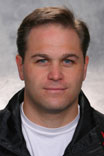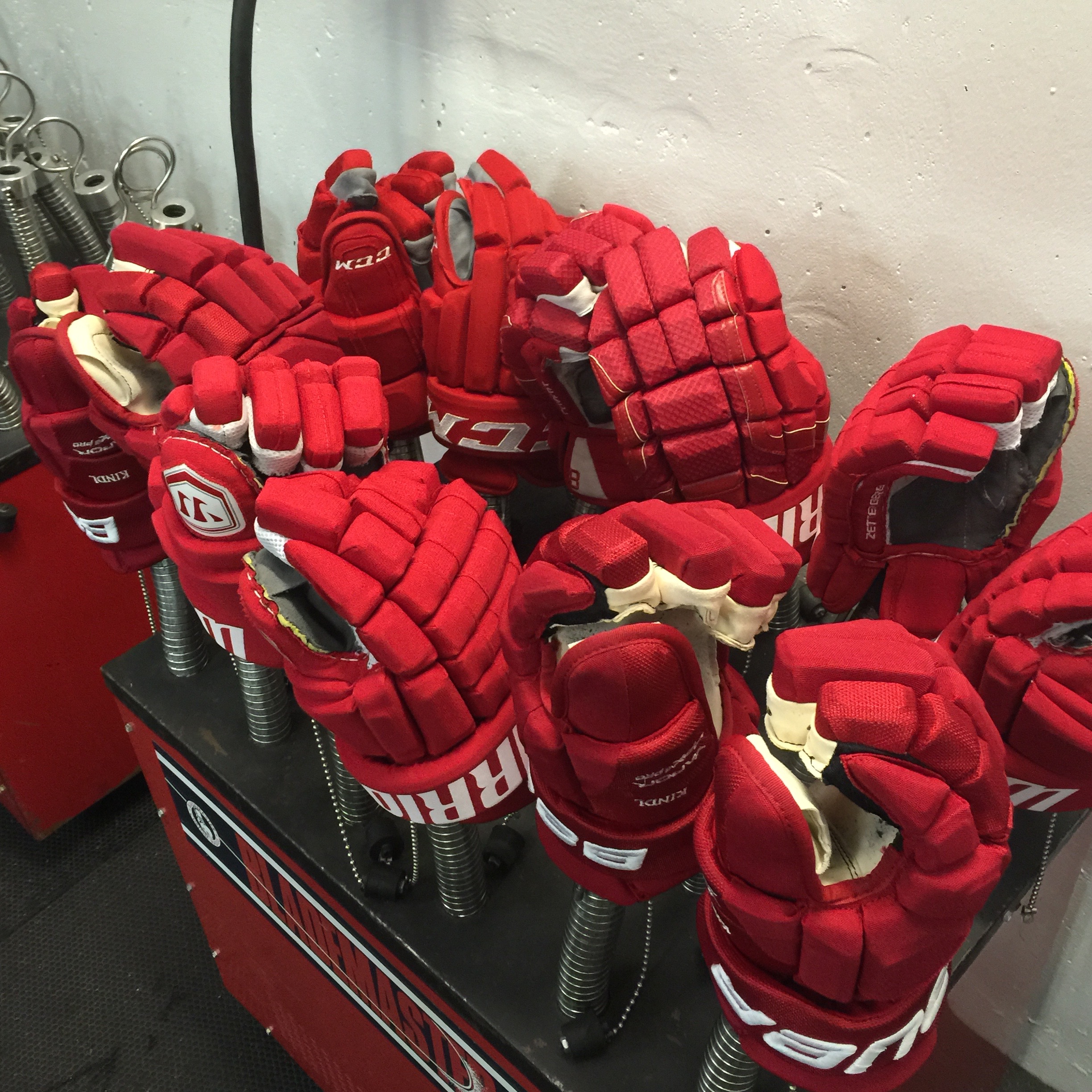A Day In The Life On The Road
Posted by AJ Lee on 04 26 2016
A Day In The Life On The Road
By: AJ Lee

Often overlooked and underappreciated by fans across the NHL, the role of team equipment manager is much more demanding than most would imagine. In a recent interview with Detroit Red Wings equipment manager, Paul Boyer, I was able to pry a little bit deeper into a day in the life of an NHL equipment manager.
If you’re a fan of sleeping, structured work hours and an organized list of responsibilities, this career path is definitely not for you. To succeed in a role as an equipment manager, you have to have a variety of skills, the ability to quickly — and, often, creatively — resolve issues and have a serious passion for the game.
After 21 years as the Red Wings’ head equipment manager, Boyer has been through it all. He’s sharpened more than 87,000 pairs of skates and attended more than 1,600 NHL games. While he may not put on the Red Wings sweater each night, he’s very much an important member of the team.
Here’s a walkthrough of what Boyer and his two assistants accomplish on the road:
It’s 2 a.m. when the Red Wings finally arrive for a road game (against the Calgary Flames) in Alberta, Canada. Boyer has already made arrangements for a truck to be waiting upon their arrival at Calgary International Airport. The players and coaches will head straight to the team hotel to catch a couple more hours of sleep before the game ahead. Meanwhile, Boyer and his team (two assistant equipment managers and two individuals provided by the home team) are responsible for loading each player’s gear and sticks onto the truck, and carting all team equipment to the rink.
Thankfully, Scotiabank Saddledome is only 30 minutes from the airport. The gear is then unloaded and carted into the locker room. Each player has his gear unpacked and placed/hung in a locker stall to make sure it is dried and ready for the morning skate later that day. Extra equipment/accessories are also carted in, fans are set up to circulate air, the door is locked, and Boyer and Co. finally are able to get some shuteye.
Following just a couple hours of sleep, Boyer and his team are back at the rink, arriving by 7:45 a.m. in preparation for the team’s morning skate. Skates need to be sharpened, equipment needs to be repaired/replaced and special requests from players need to be addressed. Boyer, who personally sharpens every player’s skates, knows exactly how each player wants his skates sharpened and profiled.
After all skates have been sharpened, the equipment team takes care of any last-minute player requests — such as taking a quarter inch off their sticks, changing the hollow on their skate blades, switching the visor on their helmets, etc.
The players take to the ice for the morning skate as Boyer and his team watch from the sidelines. They keep an eye out for broken sticks and lost edges, but are mostly able to use this time to sit back and relax.
 Once the morning skate ends, it’s back to work. Players undress
in the locker room, where their gear is hung in their stalls to dry while fans once
again circulate the air throughout. Many players will go to the hotel to eat,
rest and mentally prepare for the game. Others stick around for a bit to complete
some physical therapy before heading back. Since goalies prefer to have their
skates sharpened after the morning skate, Boyer also uses this time to accomplish
that task.
Once the morning skate ends, it’s back to work. Players undress
in the locker room, where their gear is hung in their stalls to dry while fans once
again circulate the air throughout. Many players will go to the hotel to eat,
rest and mentally prepare for the game. Others stick around for a bit to complete
some physical therapy before heading back. Since goalies prefer to have their
skates sharpened after the morning skate, Boyer also uses this time to accomplish
that task.
Once all players have been taken care of, goalie skates have been sharpened and the last player has exited the locker room, Boyer and his assistants take a few well-earned hours to relax. They’ll usually head to the hotel at this time to take a nap and grab something to eat.
For a standard 7:30 p.m. start time, Boyer and his team return to the rink around 4 p.m. to make sure that everything is in order for when the players start to arrive — players usually get to the rink between 4:30 p.m. and 5 p.m. to begin game preparation. Boyer and his assistants make themselves available to the players, but most are busy preparing and warming up.
Soon enough, it’s time to drop the puck and begin the night’s action. Boyer takes his place at the end of the bench and keeps a watchful eye on the action. Similar to a referee, Boyer needs to watch the game through a “different lens” — certainly different than that of a spectator.
When a player breaks a stick, he heads toward the bench for a new one. Boyer has to figure out who broke a stick, find another customized stick for that player among a line of more than 100, and hand it to the player (who never leaves the ice) on the fly.
Boyer is also on the lookout for injuries, equipment malfunctions, players losing an edge on their skates, etc. All of these issues need to be addressed as quickly and as efficiently as possible so that players can get back into action.
With just a couple minutes left in the third period, Boyer has members of his team begin to bundle sticks and set equipment bags in front of the player’s stalls. This will allow the players to quickly and easily put their equipment into the bags, which in turn makes Boyer’s life a little easier.
After the coach’s postgame speech, Boyer will gather all of the laundry, player equipment bags, sticks and rest of the gear. Everything is piled onto carts and loaded onto the truck. Once everything has been loaded — and Boyer triple-checks to make sure he has all of the gear — it’s time to head to the airport.
It’s 11:30 p.m. Flight leaves in an hour.
The Red Wings arrive at the airport around midnight, and Boyer’s team helps load the gear onto the plane. Once loaded, Boyer checks the truck one last time before handshakes and thanks are exchanged with the employees provided by Calgary. Satisfied that they have everyone and everything, Boyer and Co. settle in their seats and begin to think about the next trip.
Another team, another city … just another day in the life on the road.
